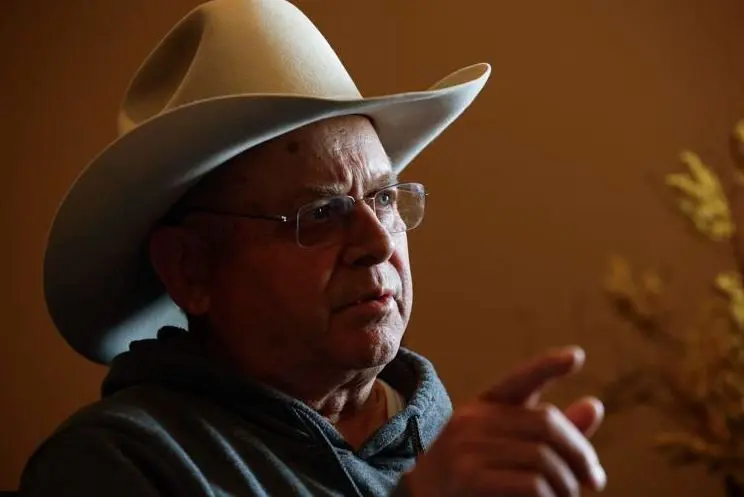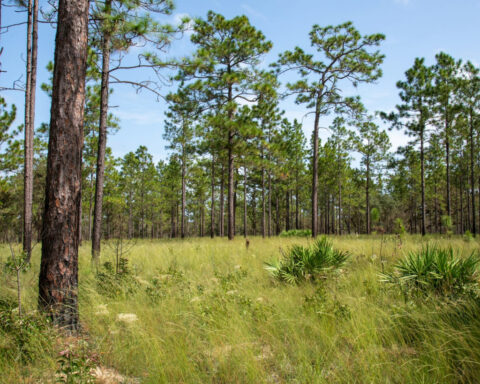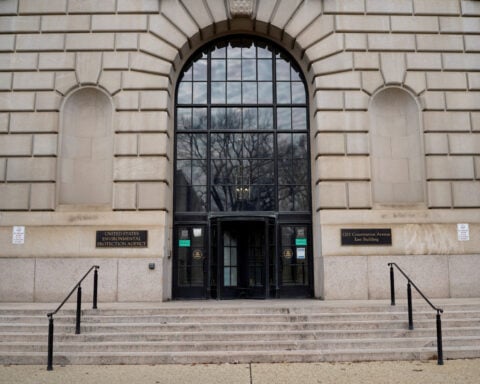Montana (The Montana Standard) -- Grizzly bear buffs and ranchers in the Madison Valley share at least one goal — conserving the wide-open landscape required by both the bruins and the ranchers to thrive.
Grizzlies continue to disperse from the Greater Yellowstone Ecosystem, a reality recognized years ago by the Madison Valley Ranchlands Group. A game camera recently captured an image of a sub-adult grizzly in the Tobacco Roots west of McAllister.
Now, the ranchlands group hopes funding designed to reduce grizzly conflicts will boost efforts already underway to facilitate co-existing with the bears.
That money could help pay for electrified mats placed across gate openings to discourage grizzly travel into conflict zones and save ranchers from having to open and close gates a dozen times a day. The funding also could help deploy five-wire electric fences, pay for range riders and support ongoing transport of cattle and calf carcasses from pastures to compost carcass facilities.
For a time, the Madison Valley Ranchlands Group helped fund a range rider to monitor livestock herds and keep an eye on predators, including both grizzlies and wolves. That could happen again.
John Crumley, president of the ranchlands group, said the range rider program was very successful.
The goal is co-existence among cattle producers and other Madison Valley landowners with carnivores.
Linda Owens, project director for the Madison Valley Ranchlands Group, said preventing conflict with grizzlies benefits the bears, the ranchers whom she said are an integral part of the Madison Valley landscape and efforts to preserve open space as development pressures increase.
The U.S. Department of Interior and the National Fish and Wildlife Foundation have awarded nearly $5 million to Montana Fish, Wildlife & Parks to support Montana agricultural producers’ efforts to prevent grizzly bear conflicts.
An additional $6 million to $7 million will be delivered to Montana through the Natural Resources Conservation Service’s Regional Conservation Partnership Program grant awarded to the Heart of the Rockies Initiative, a nonprofit based in Missoula.
The Madison Valley Ranchlands Group will receive some piece of that funding, as will other landowner-led collaborative groups that work to prevent conflicts between wildlife and livestock.
On Tuesday morning, the Heart of the Rockies Initiative and the ranchlands group, with flight support from EcoFlight, co-hosted an event at the Ennis-Big Sky Airport meant to help spread the word about non-lethal tactics and strategies designed to reduce such conflicts in the region.
EcoFlight pilot Gary Kraft provided two flights in a Cessna T210M, offering reporters views from 7,500 feet of the Madison Valley, the Madison Range, the Norris Hill, the Tobacco Roots, the Gravelly Range and communities along the flight path.
EcoFlight says it uses small aircraft “to provide the aerial perspective to educate and advocate for our remaining wildlands, watersheds and culturally important landscapes.”
Levi Chandler, manager for the Valley Garden Ranch near McAllister, provided narration for the first flight. He said the ranch he manages has had more problems to date with wolves than bears.
Grizzly bears roam the landscape equipped with a remarkable sense of smell.
“A bear’s sense of smell is seven times better than a bloodhound’s and 2,100 times better than [a human’s],” according to the National Park Service.
Dead cows, calves and other livestock can be a prime attractant for grizzlies, luring them to cultivated and human-inhabited landscapes where the bears are not welcome.
The Madison Valley Ranchlands Group provides carcass removal and a carcass compost program.
The Blackfoot Challenge, the Big Hole Watershed Committee and other landowner-led groups in Montana have implemented measures in recent years to try to reduce conflicts with grizzly bears.
Jamie Jonkel, a bear management specialist with Montana Fish, Wildlife & Parks, has worked for years with members of the Blackfoot Challenge, the Natural Resources Conservation Service, the U.S. Fish and Wildlife Service and others to try to minimize conflicts with bears dispersing into the Blackfoot River Watershed from the Northern Continental Divide Ecosystem.
Jonkel said grizzlies encountering electrified mats and electric fences receive a jolt they don’t like and associate it with the site where it happened. Former FWP colleague Tim Manley, along with Brady Stone, who has ties to the Blackfoot Challenge, helped design or refine the mats.
Jonkel said ongoing innovation could help yield other non-lethal methods for managing bears.
“It’s evolving, evolving fast,” he said.
The Blackfoot Challenge has been a leader among landowner-led groups in Montana working in collaboration on large-scale landscape challenges.
Owens said the Madison Valley Ranchlands Group has about 300 members, including landowners who are not involved in agriculture. She acknowledged that opinions about grizzlies and wolves vary among the members.
But learning to co-exist seems like a worthwhile goal, she said, and one that will be necessary regardless of whether grizzly bears retain or lose Endangered Species Act protections as a threatened species.
“Bears and wolves are basically a public resource,” Owens said. “If people love them, they should step up and help keep them on the landscape.”

 Trump has begun another trade war. Here's a timeline of how we got here
Trump has begun another trade war. Here's a timeline of how we got here
 Canada's leader laments lost friendship with US in town that sheltered stranded Americans after 9/11
Canada's leader laments lost friendship with US in town that sheltered stranded Americans after 9/11
 Chinese EV giant BYD's fourth-quarter profit leaps 73%
Chinese EV giant BYD's fourth-quarter profit leaps 73%
 You're an American in another land? Prepare to talk about the why and how of Trump 2.0
You're an American in another land? Prepare to talk about the why and how of Trump 2.0
 Chalk talk: Star power, top teams and No. 5 seeds headline the women's March Madness Sweet 16
Chalk talk: Star power, top teams and No. 5 seeds headline the women's March Madness Sweet 16
 Purdue returns to Sweet 16 with 76-62 win over McNeese in March Madness
Purdue returns to Sweet 16 with 76-62 win over McNeese in March Madness








